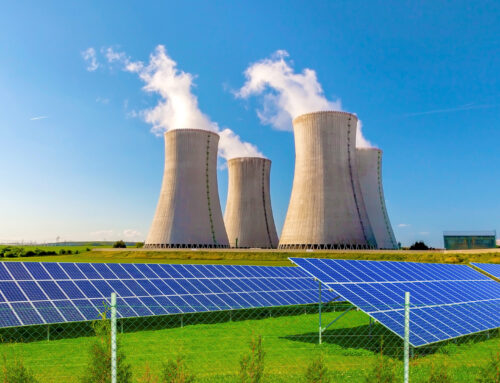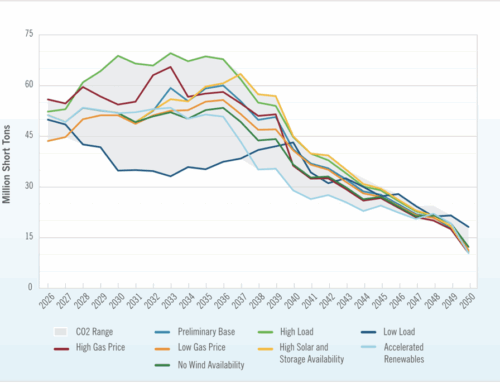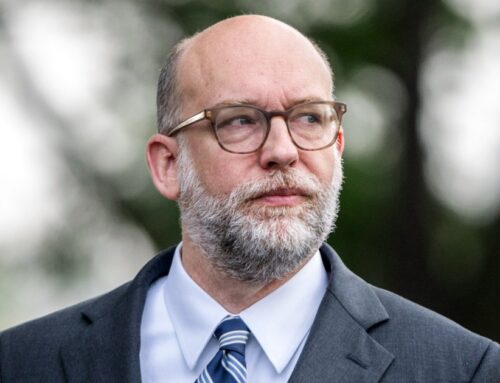Risks of Restarting Duane Arnold nuclear plan
October 1, 2025
Sierra Club Iowa Chapter urges legislators and the public to oppose the restart of the Duane Arnold nuclear plant and to support Iowa’s transition to safe, clean, and renewable energy sources.
On September 29, 2025, the Iowa Chapter of the Sierra Club hosted a press conference to address NextEra Energy’s proposal to restart the Duane Arnold nuclear plant, which has been in decommissioning since 2020. Experts in nuclear energy, public health, and environmental law provided insight into the risks of nuclear power and Iowa’s proven success with renewables.
To see the recording of the press conference: Iowa’s Energy Future – Nuclear Risks vs. Renewable Solutions
To see the presentation slides:
Renewables vs. Nuclear in Iowa by Mark Z. Jacobson
Analysis of Changes in Local Health Near Duane Arnold Nuclear Plant by Joseph Mangano
The press conference was held to address NextEra Energy’s proposal to restart the Duane Arnold nuclear plant in Iowa, which has been in decommissioning since 2020. The company has requested federal approval to transfer connections from three planned solar projects to support the nuclear restart. The goal of the press conference was to inform the public about this proposal, its broader implications for Iowa’s energy future, and to provide clear, fact-based information about the challenges and alternatives to nuclear energy.
Restarting Duane Arnold poses significant safety, environmental, and economic risks. The plant’s GE Mark I reactor design is decades old and has known safety flaws, and components may have degraded during the five years of decommissioning. Nuclear energy generates highly radioactive spent fuel that remains dangerous for hundreds of thousands of years, and routine plant operations can impact local communities’ health, including increased cancer rates and infant mortality. Delays in decommissioning the Duane Arnold plant increase safety and financial risks, while the potential use of public funding raises concerns about taxpayers bearing the cost. Additionally, the abandonment of previously planned solar projects shifts resources away from proven renewable energy solutions, further undermining Iowa’s clean energy future.
Speakers highlighted that Iowa has the tools and proven capacity to meet its energy needs safely, affordably, and sustainably through renewable energy sources like wind and solar. Experts emphasized that the state can continue to lead with clean energy while avoiding the safety and financial risks of nuclear power. This amplified importance of science backed decision-making and public participation to ensure Iowa’s energy future is secure, clean, and renewable.
“Iowa now gets nearly 79% of its electricity from wind, water, and solar. Despite that, electricity prices here are about three cents per kilowatt-hour below the national average. The idea that renewables raise costs is simply a myth, in fact, they keep prices low,” said Mark Z. Jacobson, Director of the Atmosphere/Energy Program at Stanford University.
“Before Duane Arnold began operating, cancer rates in nearby counties were 6.5% below the state average. But after decades of operation, those same counties showed cancer rates more than 12% higher. That translates to nearly 500 additional cancer cases among local residents under age 40,” said Joseph Mangano, Executive Director of the Radiation and Public Health Project.
“Nuclear power is not clean or renewable. Uranium mining leaves radioactive waste, reactors routinely leak tritium into groundwater, and the spent fuel remains dangerous for hundreds of thousands of years with no solution in sight,” said Wally Taylor, Conservation Chair and Legal Chair of the Iowa Chapter of the Sierra Club.
“The Duane Arnold reactor uses the same GE Mark I design as the Fukushima reactors that melted down in 2011. This is an old, well-documented, and dangerous design, so flawed that even in the 1970s, engineers warned it could lead to a devastating accident. Fukushima proved those warnings were justified,” said Don Safer, Co-Chair of the Sierra Club Grassroots Network Nuclear Free Team.
More about the Speakers:
Mark Z. Jacobson is a Professor of Civil and Environmental Engineering and the Director of the Atmosphere/Energy Program at Stanford University. He has been a professor at Stanford since 1994. His career focuses on better understanding air pollution and global warming problems and developing clean, renewable energy solutions to them. He has published seven books, including his latest, “Still No Miracles Needed,” and 190 journal articles..
Joseph Mangano, MPH MBA, is a health researcher who has served as executive director of Radiation and Public Health Project since 1989. Mangano is author or co-author of 33 medical journal articles on radiation health, and is the author of the books Low Level Radiation and Immune System Damage: An Atomic Era Legacy (1998) and Radioactive Baby Teeth: The Cancer Link (2008). He managed the study of Strontium-90 in baby teeth, and now manages the citizen-based radiation monitoring programs near the Indian Point NY and Oyster Creek NJ nuclear plants.
Wally Taylor is the Conservation Chair and Legal Chair of the Iowa Chapter of the Sierra Club, who has practiced environmental law for over 40 years and brings deep expertise on legal strategies to protect Iowa’s energy future.
Don Safer is the Co-Chair of the Sierra Club Grassroots Network Nuclear Free Team and on the Board of the Tennessee Environmental Council. He has been working to raise awareness of the dangers and downsides of nuclear power for almost 50 years.

Search
RECENT PRESS RELEASES
Related Post




